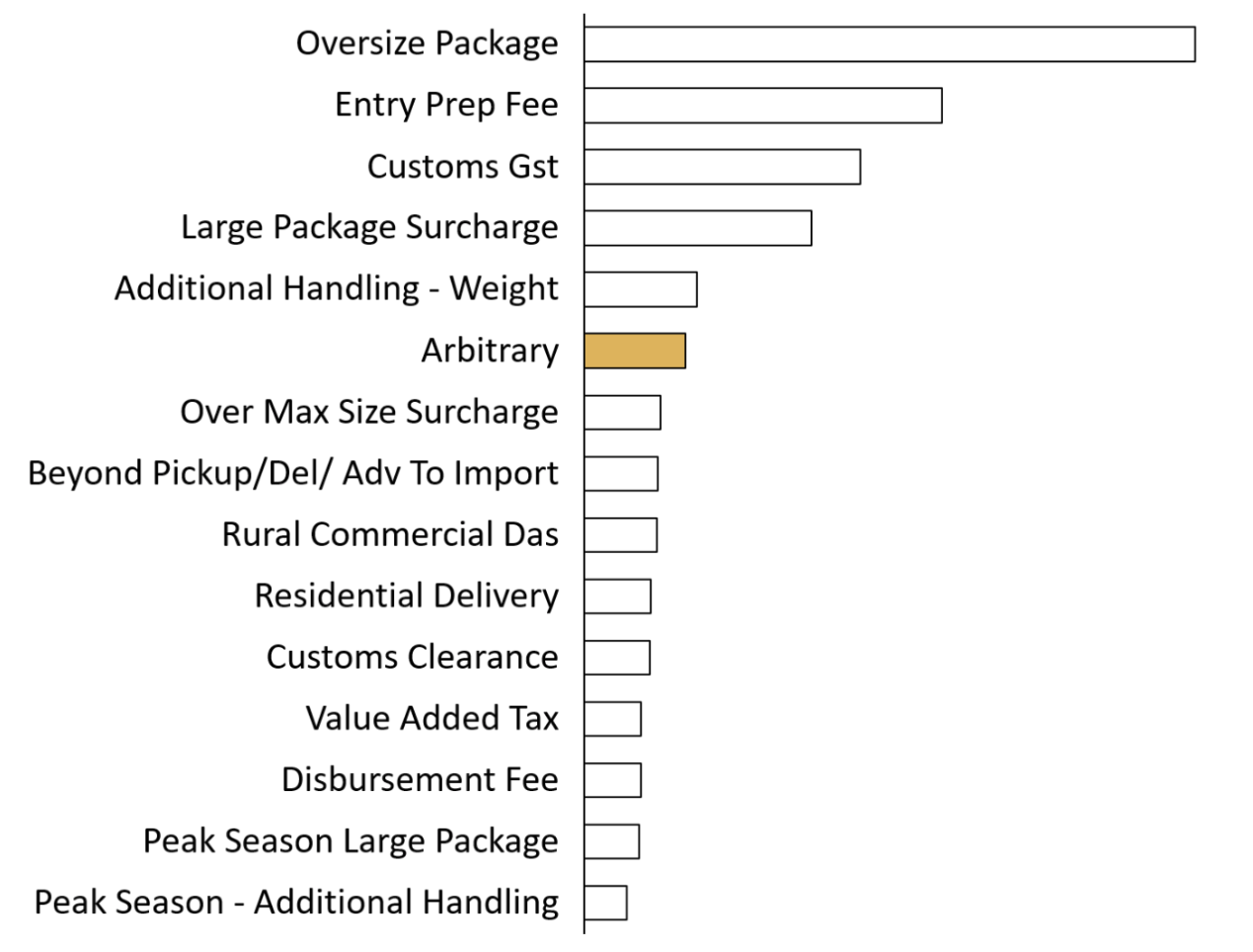Predicting Freight Costs Series- Part 1
Predictive modeling or shipping APIs?
by Michael Janiak, Synapsum's Head of Data and Analytics
It is common for manufacturers and distributors to charge their customers for shipping or to offer a free shipping program in which shipping fees are waived above an order size threshold. Getting the freight cost prediction right is important for the distributor and customer. The distributor wants to ensure that they recover shipping charges. The customer benefits from having the choice of paying for shipping or adjusting the order to qualify for free shipping.
Figure 1: Common freight cost splits by category for Synapsum customers.
In B2C, shipping APIs are often sufficient in predicting freight cost at point of order. In B2B, things become more complicated and implementing shipping APIs becomes challenging:
Fees for most shipping modes incorporate accessorial “penalty charges” that are seldom accurately represented by APIs. More below.
For LTL users, unlike parcel, the carrier landscape is fragmented, resulting in many APIs to plug into, and some LTL carriers do not offer APIs. Synapsum’s customers that use LTL can use more than 10 providers.
Distributor product master data is often insufficient as input for carrier APIs. For example, to calculate billable weight for UPS, a distributor needs both package weight and dimensions. If product master data is missing either component or is sparsely populated, what should the distributor do?
One option is to offer a “prepay and add” program where the freight weight and dimensions are calculated at the point of shipping and the customer is billed a shipping fee adder, the “add” in prepay and add. This is not an ideal customer experience as many customers do not like surprise bills.
Honing in on the first point, for LTL and Parcel ground, accessorials are a large and unpredictable part of carrier fees: We see approximately 40% of costs in parcel ground and 20% of LTL being driven by non fuel surcharge related accessorials.
“What does this mean for orders? In a third of orders, accessorials account for 20 to 40% of carrier fees, while in 15% of orders accessorials account for more than 40% of fees.”
Figure 2: Common order splits by percentage of cost driven by Other Accessorials.
What does this mean for orders? In a third of orders, accessorials account for 20 to 40% of carrier fees, while in 15% of orders accessorials account for more than 40% of fees. This split is roughly the same for LTL and parcel ground.
In case you are new to accessorials, what are these mysterious charges? Below is a sample of the top 15 of the 200 that we are aware of, ranked. They can usually be categorized in common sense groupings such as product, ship to location, peak, border fees but they can be finicky as their coding is inconsistent by carrier and over time. Accessorials can be “arbitrary” and distributors will often use auditors to resolve unreasonable charges. Synapsum’s approach on these fees is to address them on the demand side and ensure that they are being appropriately recovered, but more on this in another blog post.
Figure 3: Representative accessorials ordered by carrier fees.
So if you are distributing goods and need to specify a shipping fee at the point of order, what do you do? Peanut butter spread your accessorials on top of your API generated costs to aid in recovery and you will annoy two thirds of your customers. Ignore accessorials and you will under recover your freight cost by 20 to 40%.
This is where predictive modeling of freight cost on your own data comes to the fore. To learn more about how this works for B2B companies, reach out at info@synapsum.com.


